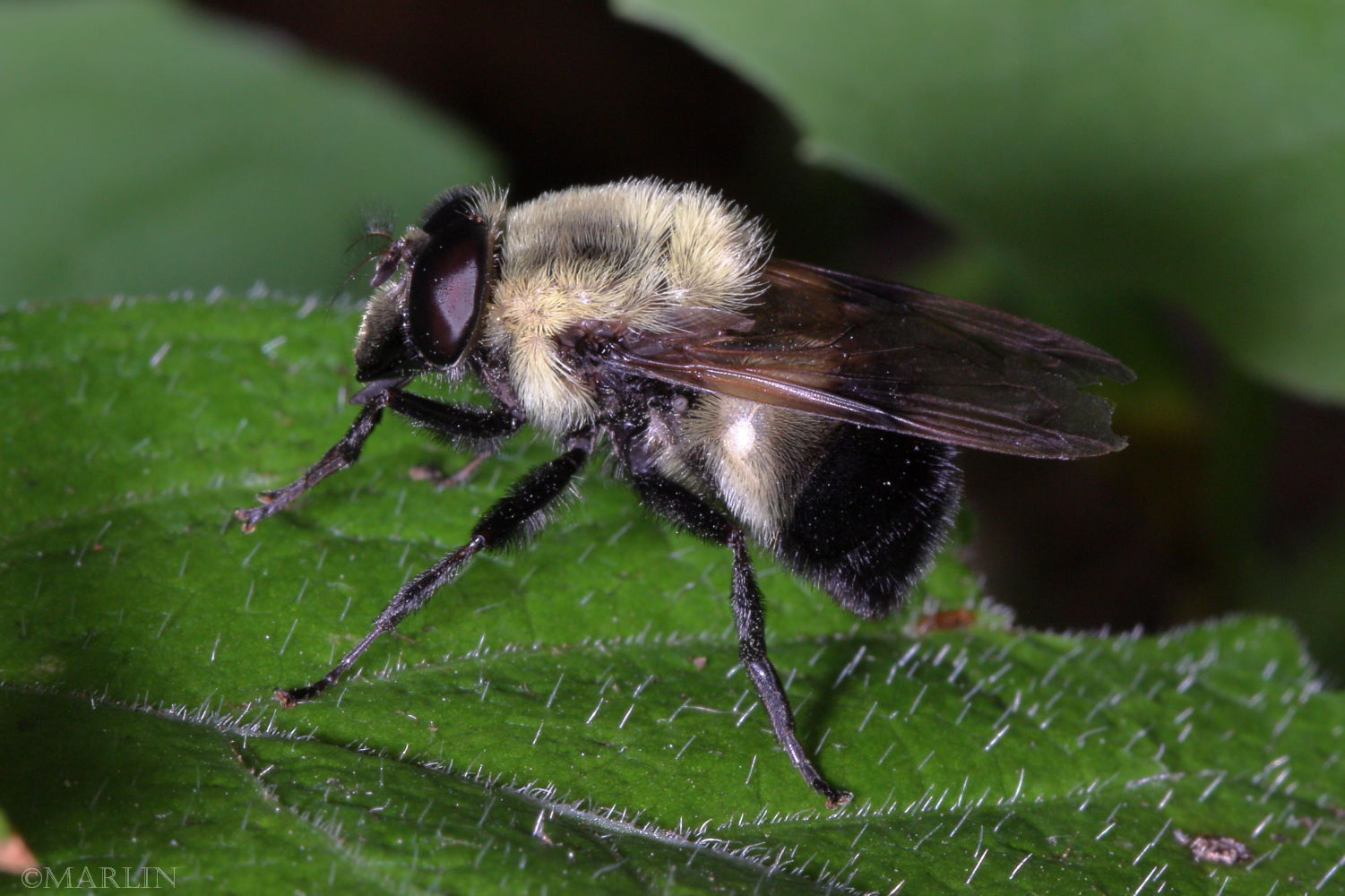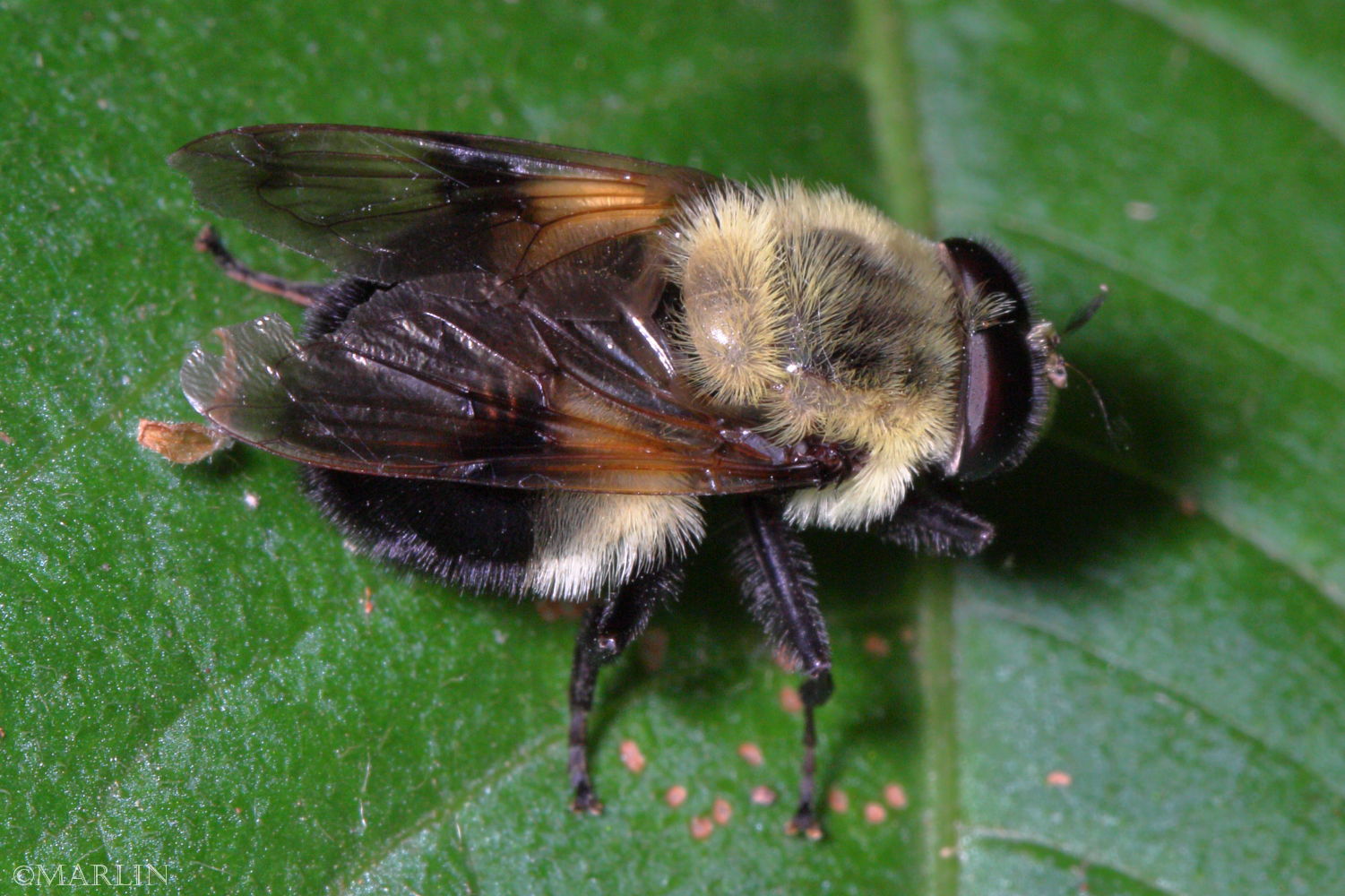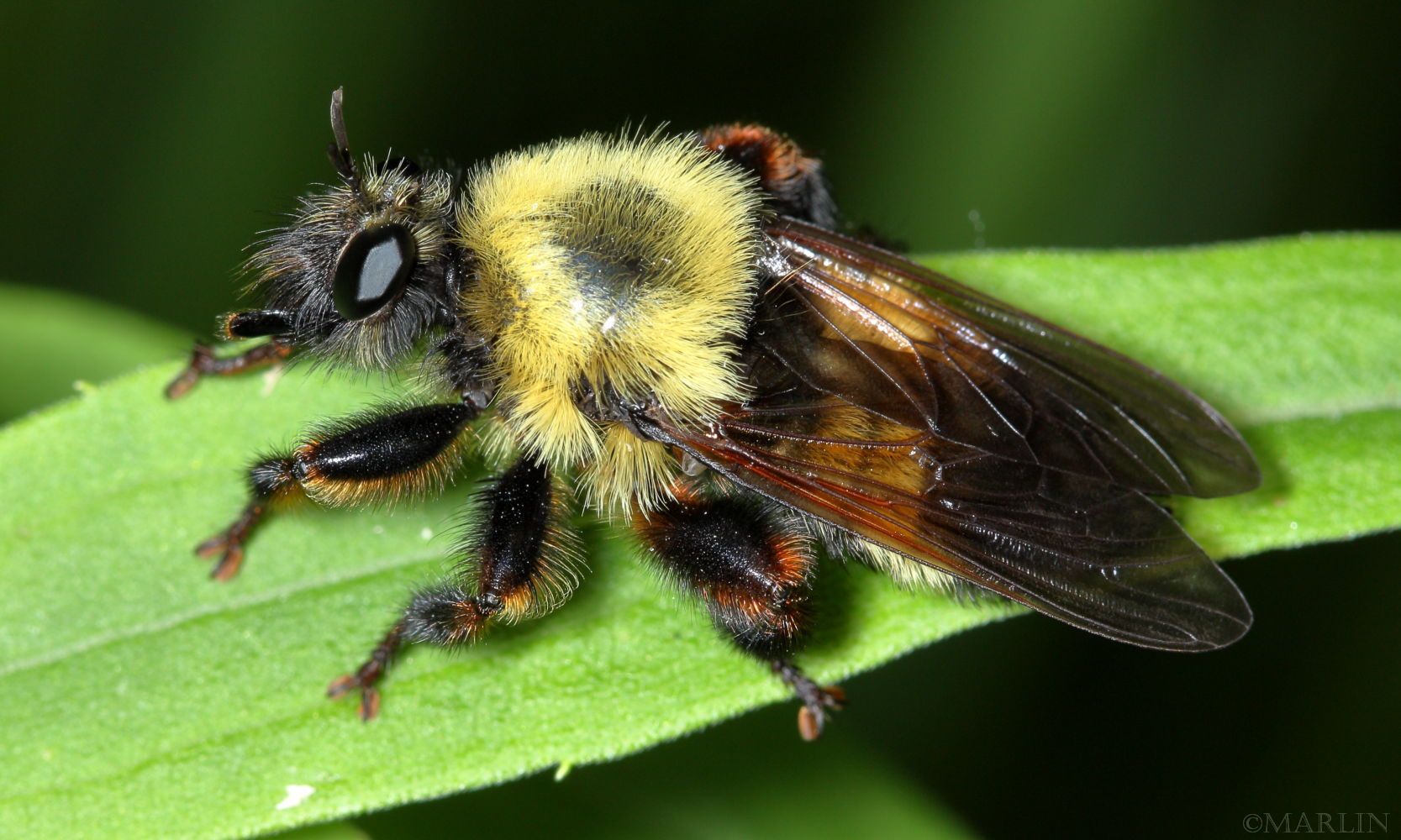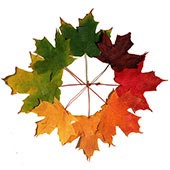Syrphid Fly – Volucella bombylans
Volucella bombylans is a non-native apparently introduced from Europe [3]. This male specimen, measuring 13mm, was found along a forest path, actively feeding on flower nectar. They look for all the world like small bumble bees – the species epithet refers to the bumble bee genus Bombus for this reason.
This fly is engaging in Batesian mimicry of a venomous critter, the bumble bee. Batesian mimicry is advantageous for an insect because it allows a non-venomous or harmless species to gain protection from predators by imitating the appearance of a venomous or poisonous species.
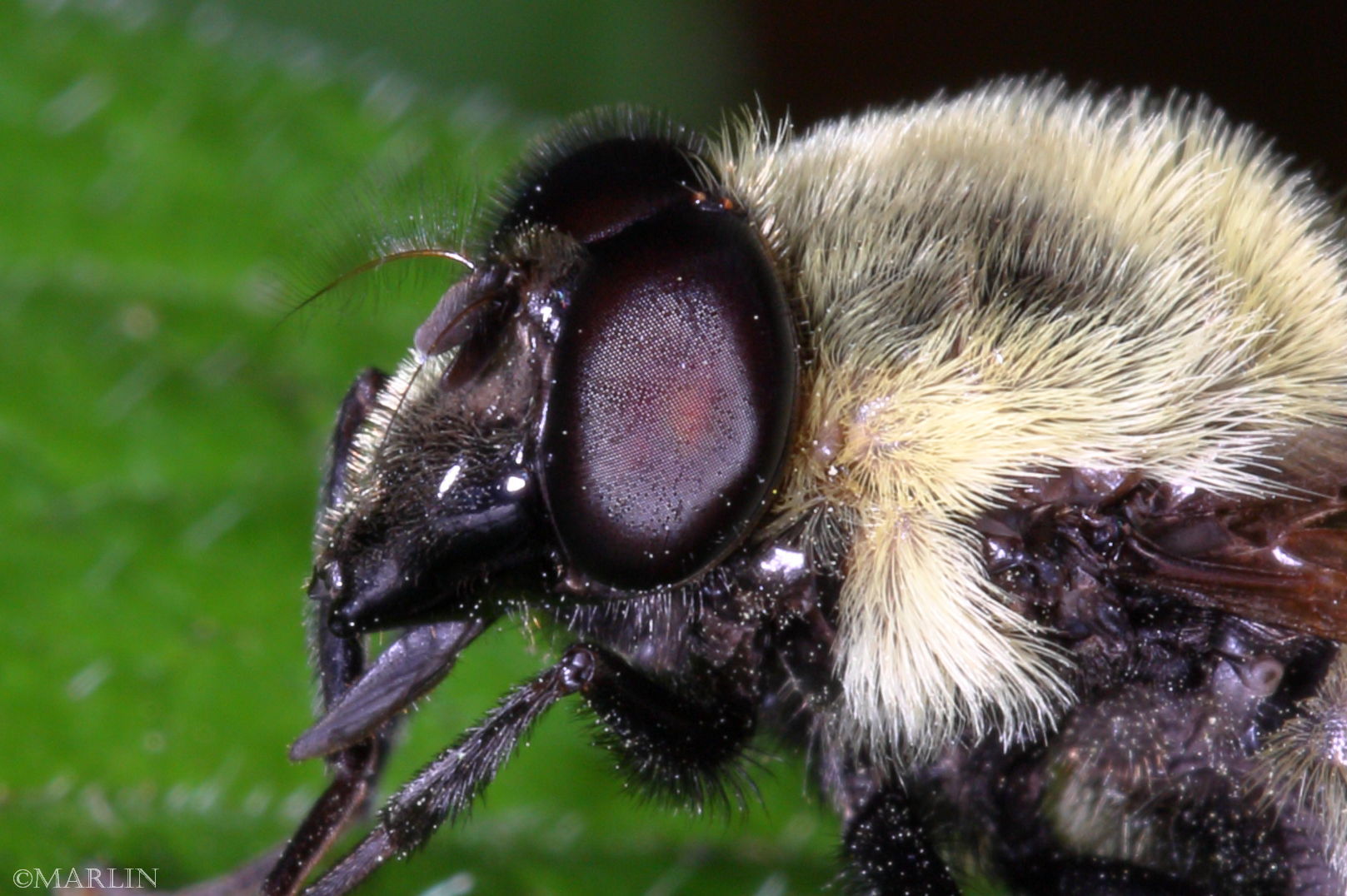
Batesian mimicry reduces to zero the venom-delivery cost for the mimicking insect: Producing venom is energetically costly for an insect. It requires resources and energy to synthesize, store, and maintain venom glands and the associated apparatus for venom delivery, such as specialized stingers or mouthparts. Non-venomous insects that mimic venomous ones can allocate these resources to other essential functions, such as reproduction or growth, rather than investing them in venom production.
Who’s zooming who? This fly might also be mimicking robber flies in the genus Laphria (below), themselves eminent bumble bee mimics.
A single hoverfly larva can consume a substantial number of aphids during its development. Their high appetite for aphids helps control aphid populations effectively.
